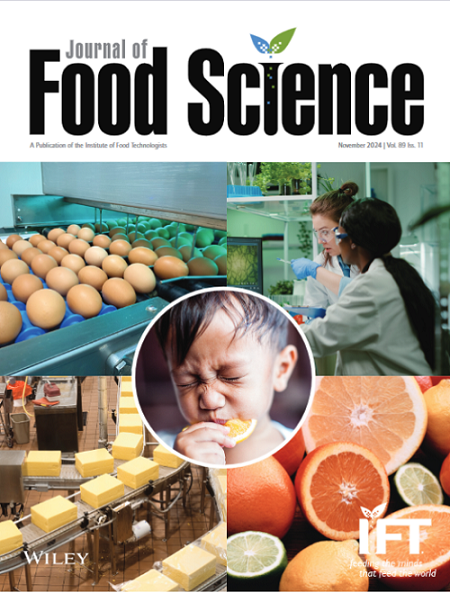Soy Protein Hydrolysate Accentuates the Cocoa-Like Flavor Attributes of Carob-Based Dark Chocolate
Abstract
ABSTRACT
Roasted carob pulp is known for its faint cocoa-like flavor. Although it exhibits potential as a cocoa replacer, its cocoa-like aroma and bitter taste are weaker than those of conventional cocoa. To shrink this flavor gap, the present study detailed a novel approach of tapping on crude protein hydrolysates for the accentuation of these flavor attributes in dark chocolates. A comparison between protease types (Flavourzyme and Neutrase) and protein substrates (whey, pea, soy, wheat, and endogenous carob pulp protein) revealed that soy protein hydrolysates derived from Flavourzyme treatment contained the highest branched-chain amino acids (BCAA; 68.82 mg/g) and short-chain peptide content (3.04 × 107 peak area). Hydrolysate-added carob pulp was correlated with a distinct increase in BCAA-derived 2-methylbutanal (38.3%) and 3-methylbutanal (69.8%) and the generation of a diverse group of alkylpyrazines, including 2-methylpyrazine (0.34 µg/g) and 3-ethyl-2,5-dimethylpyrazine (0.12 µg/g). Descriptive sensory analysis revealed a distinct increase in bitterness, which could be correlated with the introduction of short-chain bitter peptides.
Practical Application
This study successfully validates an approach for the promotion of cocoa-like flavor attributes of roasted carob pulp. In light of current cocoa supply constraints and challenges in sustainable production, these findings are envisioned to enhance consumer acceptance of carob applications in cocoa-based products. This is especially significant for consumers who desire the cocoa-like flavor impression in such products.


 求助内容:
求助内容: 应助结果提醒方式:
应助结果提醒方式:


